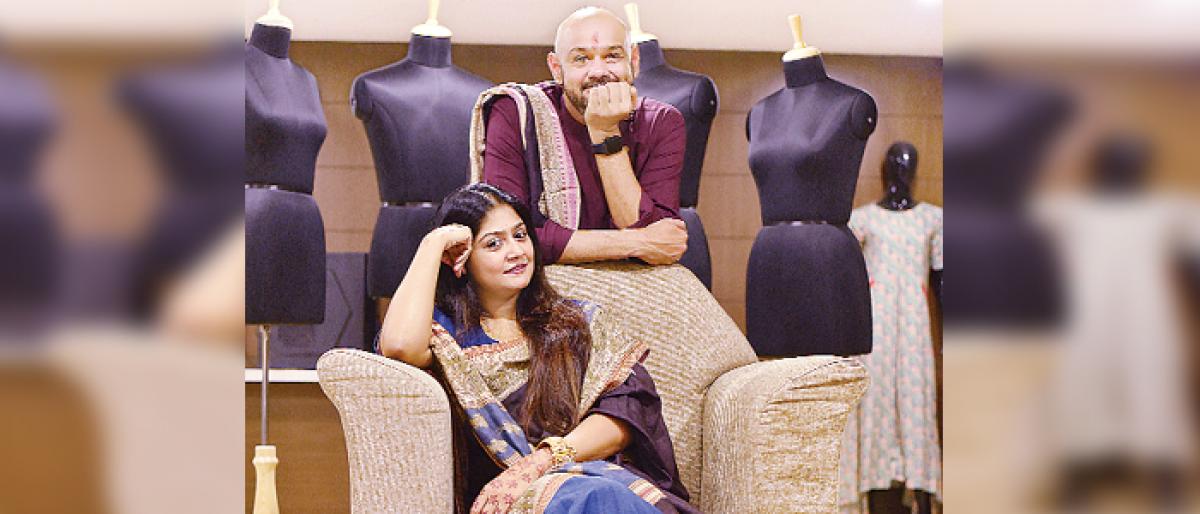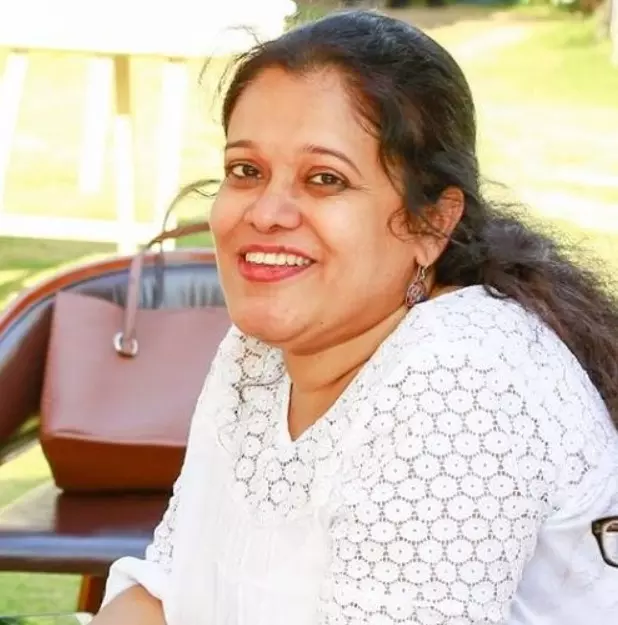Live
- 12 nominations filed on Day-1
- Infy profit zooms 30% to ₹ 7,969cr in Q4
- Only 9.83 pc candidates are women in NE states
- YSRCP Bheemili MLA candidate visits various wards
- 37 in fray for three seats in 1st phase, Cooch Behar gets maximum security
- Jhansi meets people during her morning walk
- World Liver Day 2024: Theme, History, and Significance
- Google Pixel 9 Rumoured AI Features: Magic Composer, Autofill Smart Reply, and More
- Malladi Vishnu complains to EC on Naidu, Ayyanna & Pawan
- MyVoice: Views of our readers 19th April 2024
Just In

Global stage for an Indian craft: Designer Shravan Kumar, who is known for his use of indigenous crafts and his work with eco-friendly fabrics, traditional weavers and rare weaves has been selected for the first International Eco Fashion Week, Australia. He is the only designer from India, who will be a part of the fashion week where designers from 84 countries will be showing their creations.
Designer Shravan Kumar, who is known for his use of indigenous crafts and his work with eco-friendly fabrics, traditional weavers and rare weaves has been selected for the first International Eco Fashion Week, Australia. He is the only designer from India, who will be a part of the fashion week where designers from 84 countries will be showing their creations.
Founded by Perth-based Australian eco-fashion designer and visual artist Zuhal Kuvan-Mills of Green Embassy, the weeklong inaugural Eco Fashion Week Australia (EFWA) will feature designers who practice sustainable, ethical production, either by recycling or upcycling, or use of organic and natural materials, which do not leave a carbon footprint. Shravan will be showing his collection ‘Mobile Shrine’ featuring saris, flowing gowns, jackets in khadi and silks using the rare craft ‘Mata ni Pachedi’.
He discovered the craft when his research on Kalamkari took him to Gujarat. “It is here that Kalamkari originated. I found the there is a much older and even more intricate craft of drawing with bamboo kalam (pen) on fabrics called ‘Mata ni Pachedi’, which goes back to the 16th century, practised by the Chitara tribe. There is just one family doing the craft. My sister, Jyothi Jaisooria and I, have been working with them for over eight years now. Celebrities like Nandita, Shabana Azmi, Anushka have been endorsing my designs,” shares the designer, who is extremely passionate and proud to be a part in preserving this rare and traditional Indian technique of painting on fabric.
The Chitara tribe usually draws their Gods and Goddesses on fabric that is treated with milk and castor oil, and then the painting is done using a bamboo stick and carved wooden blocks in black ink made using jaggery, tamarind seed powder and iron scrap powder. To begin with, bold borders are marked out and a temple is drawn in the centre, followed by the Gods and Goddesses and the myths surrounding them.
Shravan’s designs are around the theme of mythological stories, and working closely with craftsmen over eight months for each sari – he created a wide repertoire that he will be showcasing on a specially designed ramp with the traditional “nadaswaram” playing in the background, at Victoria Hall in the historic port city of Fremantle, Western Australia. “Our showstopper is going to be Veshal Siwach, who is a crucial part of our design team at ‘Conceptual Shenanigans’, where we do wedding decor with only Indian flowers like banti, chamanti, procured from farmers directly,” he shares.
“Jyothi and I have come a long way. It was 23 years ago when we were featured in Hindustan Times as the promising youngest designers – we were just 17 and 15 years then. It is a proud moment for us and our label.”

© 2024 Hyderabad Media House Limited/The Hans India. All rights reserved. Powered by hocalwire.com







